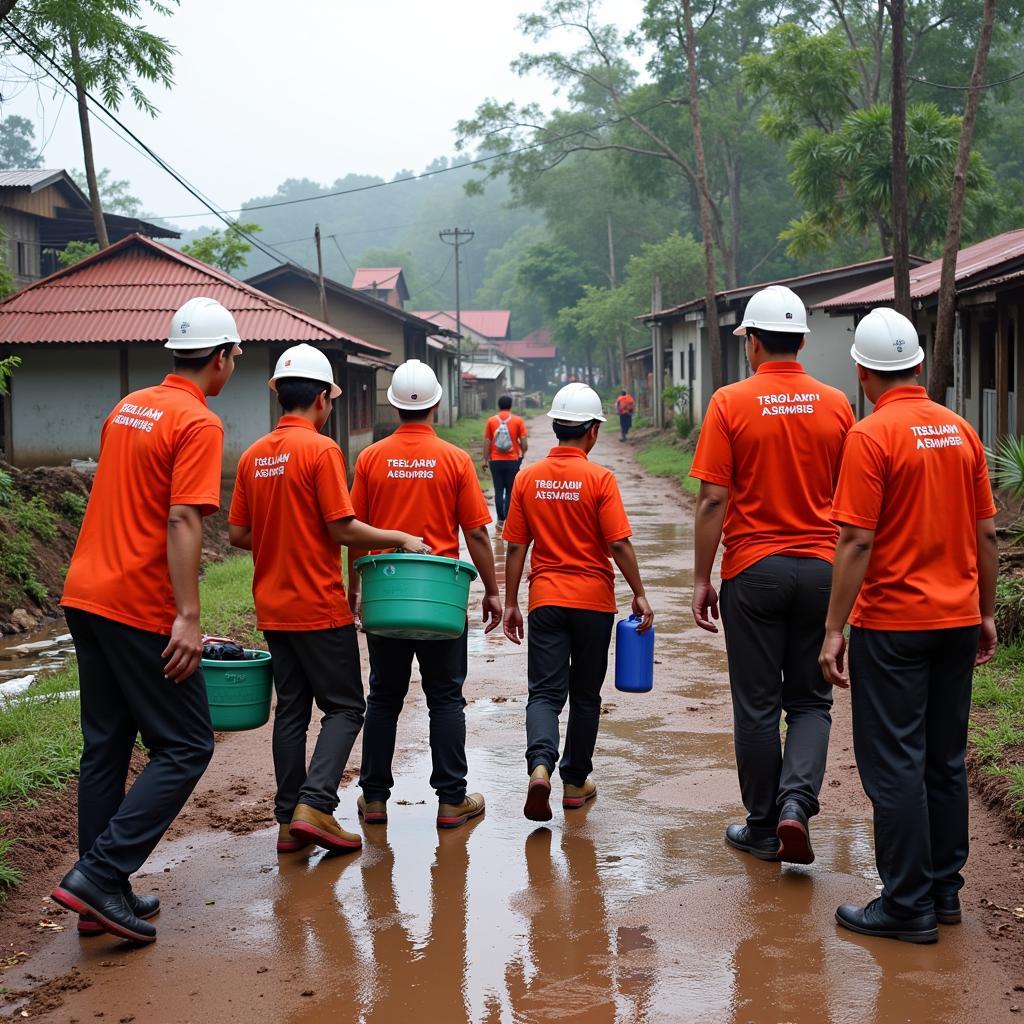The year 2017 marked a significant milestone for the Association of Southeast Asian Nations (ASEAN) as it celebrated its 50th anniversary. This pivotal year saw the organization reaffirm its commitment to regional integration and development by outlining six thematic priorities designed to guide its agenda and address key challenges facing Southeast Asia. These priorities provided a roadmap for ASEAN’s journey towards a more integrated, resilient, and prosperous community.
Unpacking the Six Thematic Priorities: A Vision for a Dynamic ASEAN
The six thematic priorities for ASEAN in 2017 were carefully chosen to reflect the most pressing issues and opportunities facing the region. These priorities were:
-
A People-Centered, People-Oriented ASEAN: Recognizing that people are at the heart of ASEAN’s success, this priority emphasized the importance of promoting human development, social justice, and inclusiveness.
-
Peace and Security: Maintaining peace and stability is crucial for regional development. This priority focused on strengthening ASEAN’s mechanisms for conflict prevention, promoting dialogue and cooperation on security challenges, and fostering a culture of peace.
-
Maritime Security and Cooperation: With vast coastlines and crucial shipping routes, ASEAN acknowledged the importance of safeguarding its maritime domain. This priority aimed to enhance cooperation in maritime security, address issues like piracy and territorial disputes, and promote sustainable use of marine resources.
-
Inclusive, Innovation-led Growth: Recognizing the need to adapt to the rapidly changing global landscape, this priority focused on promoting innovation, digital economy, and inclusive economic growth that benefits all segments of society.
-
Resilient ASEAN: Building resilience to various shocks and challenges, such as natural disasters, climate change, and economic crises, was paramount. This priority aimed to strengthen disaster risk reduction mechanisms, promote environmental sustainability, and enhance regional cooperation in addressing transboundary challenges.
-
ASEAN as a Model of Regionalism and a Global Player: This priority underscored ASEAN’s commitment to strengthening its role as a model of regional integration and a responsible actor on the global stage. It aimed to enhance ASEAN’s external relations, promote its values and principles, and contribute to shaping the regional and global agenda.
A Deeper Dive into the Thematic Priorities: Understanding ASEAN’s Vision
To fully grasp the significance of these priorities, it’s essential to delve deeper into each one and understand their specific objectives and implications:
1. A People-Centered, People-Oriented ASEAN: Empowering Communities
This priority aimed to ensure that ASEAN’s efforts translated into tangible benefits for its people. This involved promoting human capital development through education, healthcare, and skills training. It also emphasized social protection measures, gender equality, and the rights of vulnerable groups.
 ASEAN Community gathering
ASEAN Community gathering
2. Peace and Security: Maintaining Regional Stability
Maintaining peace and security is fundamental for ASEAN’s progress. This priority focused on strengthening mechanisms for dialogue and diplomacy, promoting preventive diplomacy, and addressing traditional and non-traditional security threats such as terrorism, transnational crime, and cybersecurity.
3. Maritime Security and Cooperation: Safeguarding Shared Waters
With the South China Sea dispute posing a significant challenge, this priority aimed to enhance cooperation in maritime domain awareness, search and rescue operations, and combating piracy and armed robbery at sea. It also sought to promote the peaceful resolution of maritime disputes in accordance with international law.
4. Inclusive, Innovation-led Growth: Driving Economic Progress
This priority acknowledged the need for ASEAN to embrace innovation and technological advancements to drive economic growth. It emphasized promoting entrepreneurship, developing digital infrastructure, fostering research and development, and creating a conducive environment for businesses to thrive.
 Tech startup hub in ASEAN
Tech startup hub in ASEAN
5. Resilient ASEAN: Strengthening Regional Cooperation
This priority recognized the importance of building resilience to various shocks and stresses. It focused on enhancing disaster preparedness and response mechanisms, promoting climate change adaptation and mitigation measures, and strengthening food security and energy security.
 ASEAN disaster relief efforts
ASEAN disaster relief efforts
6. ASEAN as a Model of Regionalism and a Global Player: Advancing Shared Interests
This priority aimed to further strengthen ASEAN’s role in shaping the regional and global architecture. It involved deepening engagement with dialogue partners, promoting multilateralism and a rules-based international order, and advocating for ASEAN’s interests and values on the global stage.
The Legacy of 2017: A Foundation for a Stronger ASEAN
The six thematic priorities of 2017 served as a compass for ASEAN’s journey towards a more integrated, resilient, and prosperous community. They reflected the shared aspirations of ASEAN member states and their commitment to working together to address common challenges and seize opportunities. While 2017 marked the 50th anniversary of ASEAN, it also served as a launching pad for the organization’s continued evolution and its pursuit of a people-oriented, peaceful, and prosperous Southeast Asia.
FAQs about ASEAN 2017 Thematic Priorities
1. How did the six thematic priorities of 2017 differ from previous ASEAN agendas?
The 2017 priorities placed a greater emphasis on inclusiveness, innovation, and resilience, reflecting the evolving challenges and opportunities facing the region.
2. What were some of the key achievements of ASEAN in 2017 under these priorities?
ASEAN made progress in areas such as strengthening maritime security cooperation, promoting digital economy, and enhancing regional disaster response mechanisms.
3. How did the thematic priorities contribute to ASEAN’s vision of a people-centered community?
The priorities aimed to ensure that ASEAN’s efforts translated into tangible benefits for its people, such as improved livelihoods, greater security, and a more sustainable environment.
4. What role did external partners play in supporting ASEAN’s 2017 agenda?
Dialogue partners provided support in areas such as capacity building, technology transfer, and financial assistance to help ASEAN achieve its goals.
5. How did the 2017 thematic priorities lay the groundwork for ASEAN’s future direction?
The priorities provided a roadmap for ASEAN’s continued journey towards greater integration, resilience, and prosperity in the years to come.
Need More Information?
For further assistance or inquiries regarding ASEAN, please do not hesitate to contact us.
Phone: 0369020373
Email: [email protected]
Address: Thôn Ngọc Liễn, Hiệp Hòa, Bắc Giang, Việt Nam
Our dedicated customer support team is available 24/7 to assist you.


